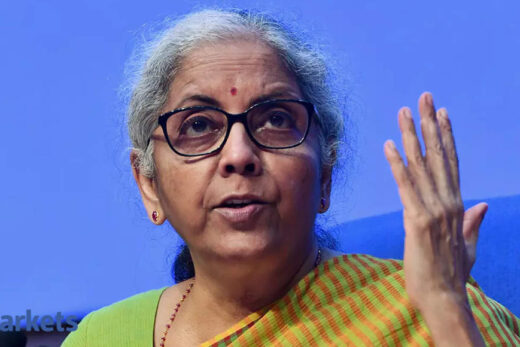RBI Governor Das reiterated the central bank’s unequivocal commitment to reviving growth in the recent policy and said that any pre-emptive monetary policy response could damage the nascent economic recovery. However, inflation forecasts have been raised and the size of variable rate reverse repo operations increased. What is your interpretation of the policy?
The overall tone of the MPC policy statement, considering multiple nuances, suggests slightly more hawkishness than we had anticipated. Of course, many of these signals lend to various interpretations.
First, our own pre-policy forecast of CPI inflation had been revised up 5.4-5.5%. The actual RBI revision was 5.7%. We had also expected one or two MPC members to take a contra view on the accommodative stance, which proved correct.
Yet, there were other signals on the dovish side. For instance, we had expected the MPC to have changed the syntax about “reviving and sustaining growth” from the previous policy. I had expected that “reviving” word would be dropped but it has been retained. Plus, the increase in the VRRR amount, which had been a market task, in order to absorb the very high surplus liquidity. I had expected that tenor would probably be increased to 28 days instead of being retained at 14 days.
The Governor has also emphasised that MPC is still looking for durable growth while being watchful on inflation. So, there are pluses and minuses on the hawkish and dovish side but overall, a bit more hawkish.
I think the focus going forward will be on managing surplus system liquidity, which is likely to keep increasing already very high levels. This will need measures for both quantity as well as the price of liquidity. Calibrating the price of liquidity will probably now be an adjunct to the increase in the VRRR quantum increase.
You had mentioned that that you were expecting a dissent and that is exactly what happened with Dr Varma. Do you think that there is some degree of concern that our CPI inflation could be getting entrenched in terms of inflation expectations?
There are two or three parts to the question.
One part is – what was the discomfort? Dr Varma’s dissent on the stance is recorded. What factors and concerns specifically underlay this contrarian view, will only become evident from the Minutes of the policy.
I am reasonably certain that some MPC members would have been concerned about sticky inflation.
This is in line with a global debate on whether and how much of the inflation is transitory and how much is persistent. All global central banks are grappling with this.
Beyond this, the question is, how much of this high price is likely to become entrenched?
For a central bank, even more than inflation itself, inflation expectations are very important, because that is the first indication that the inflation is getting entrenched.
Results of the latest RBI household inflation expectation survey show that there is a clear upswing in one month ahead inflation expectations , but not as much for three months and one year ahead. It is slightly surprising because I would have expected that the three-month expectation would have risen more, particularly with consumers facing higher prices at petrol pumps, with some other consumer durables prices added to the basket.
I have a feeling that relatively moderate increase in medium term inflation expectations is more because certain food prices have dropped in recent days So that’s some hopeful news, since this saliency suggests that inflation expectations is likely to remain relatively anchored.
However, in terms of actual inflation, our view is in line with RBI forecasts. We are also at 5.7% average inflation for FY22. July CPI Inflation printed at 5.6%, and is likely to remain around these levels in August. Then in Q3, it is likely to come down probably to about 4.8-4.9% but then rise again in Q4.
Note that this path is largely due to base effects, with prices in the corresponding quarters of last year.
But if we look at inflation on a sequential, month on month seasonally adjusted basis, there is a clear trend of persistence in many components. We need to understand the sources of this persistence of inflation. This raises the question of pricing power in consumer markets. Anecdotally, with media reports, demand has been significantly dented by the recurring lockdowns. We monitor data and interviews to get a sense of how MPC and RBI might be thinking, how much is it focussing on the trade-off between growth and inflation going forward.
It is difficult to get our heads around this question. We have analysed this trade-off using corporate data. We are trying to understand how much price has been raised by the upstream companies such as chemicals, metals, ores, minerals, etc. The results are mixed. The hot rolled, cold rolled steel prices have been raised.
But what about downstream companies which are facing end customer sales? For instance, how much has been the price rise in automobiles, ACs, air coolers, refrigerators and washing machines?
On the growth front, there was more optimism from the RBI governor. The GDP growth forecast for the financial year has been left unchanged despite the possibility of a third Covid wave. Do you see growth evolving around the central bank’s trajectory?
Our forecast also remains at 9.5%. Now there are a few developments which could lend some upside to the forecast.
First is the way the NSO estimates growth in the initial rounds. The Advance Estimates are constructed with significant inputs from corporate results. The financial results of manufacturing and services companies are adjusted with GDP deflators to arrive at real growth estimates. There are other quantity-based indicators like IIP, freight, etc. which are also inputs.
But a large contribution to the estimates comes from the corporate results. Corporate results in Q1 seem to be quite robust. Based on this, there might be an upside to this estimate of growth. Obviously, during the second wave, some segments would have been impacted. But signs from high-frequency indicators we track suggest that recovery has been better and deeper than what we had initially estimated.
Automobile sales and numbers on the consumer durables – suggest demand resilience. However, having said that, the extent of revival on the ground across a wider swathe of smaller companies is an emerging concern. We are grappling with the degree of economic scarring from the pandemic, including a potential drawdown of savings, permanent reduction in incomes, etc. That is something which bears deeper investigation.
Do you see any potential pressure on the Indian currency because of a likely widening of the current account this year? Would RBI be faced with a tricky situation in terms of sterilisation given that liquidity is already at a huge surplus?
Our present forecast for the BoP surplus – the Current Account plus the Capital Account – for FY22 is $60 billion. Of which, we estimate about $18-19 billion to have been in Q1. The remaining $40 billion will be spread over the next 2 quarters. Of course, there are a lot of things which can change this forecast.
The BoP surplus itself, even factoring in all the other things which can change, is likely to provide an appreciating bias to the rupee. As part of the domestic liquidity management we had discussed earlier, managing the effects of these flows on macroeconomic variables will be challenging. Managing the Rupee’s volatility is one; There will be two main opposing pressures on the rupee.
First, the currency will be influenced by the US dollar moves. Given the statements from the US Federal Reserve, they are likely to start normalising earlier than later, and much ahead of the European Central Bank. That will lead to some strengthening of the dollar which will result in a depreciating bias for the rupee.
Of course, this is contingent on the BoP numbers, and this is important. There are many unknowns – IPOs lined up, large disinvestments, investor response to the annulment of the Retrospective Act, bond index inclusion, etc – which could potentially result in large inflows.
Overall, my sense is that the rupee will probably remain in a 73-75/$1 band and not move beyond that, because there are other problems that could come in forward rates etc if RBI tries to intervene in the forwards market.
The second part of the question was the impact on domestic liquidity and how is the RBI going to manage this?
As I mentioned before, liquidity management will be key in determining the path and stance of accommodation in monetary policy as we go forward. Other than flows that we are anticipating, there are also other factors that would need to be considered.
In the short-term, the government balances with the RBI (especially because the government has done an excellent job in taking in taxes) will probably be spent and that will add to liquidity coming into the system.
Cash outgo from the system, the currency in circulation, was fairly high last year and that helped in managing the excess liquidity in the system. But this year, the outflows in CIC have been relatively muted and that is hence putting some pressure on the amount of excess liquidity which is exactly the reason behind the increase in VRRR amounts.
My sense is that the VRRR amounts may have to be increased even further going ahead, particularly because of what we are sensing on the liquidity situation. So RBI will likely need to target multiple objectives; not just the macro picture on growth and inflation but also financial stability, currency, forward rates, liquidity etc, it will be a fine balancing act, but they have shown their capability over the last couple of years on this in being ahead of the curve, particularly in the use of liquidity instruments.
Do you have any timeline in mind as to when the RBI would start the process of hiking the reverse repo rate?
I do not think MPC will start hiking policy rates in the October policy, or even December.
They are not going to do that because inter alia, an implicit determinant of continuing accommodative stance will depend on, and probably be linked to, the level and pace of vaccination, which is the only state variable that policymakers can control.
As and when the vaccinations move towards Rs 75-80 crore doses, there will be some comfort that a public health crisis might not re-emerge, given what we are seeing with the Delta variant in other parts of the world. Hence, generate confidence on durability of growth recovery.
The other economic variables are more exogenous. Be it inflation, funds flows, etc, much of those things are relatively exogenous to their control, the only thing that policymakers, public health policy particularly, can control is vaccination.
Of course, the major explicit driver, given the MPC mandate, will be inflation. Crude oil is a very big variable to watch because that has an inordinate impact on Indian inflation, going by past experience and even what we are seeing now. So how crude prices evolve, be it in the 65 dollar per barrel range or the 75 dollar per barrel range, will have a large part in MPC and RBI policy actions.
Coming to the growth numbers, IIP, PMIs, diesel consumption, E-Way bills, mobility, freight, electricity consumption, MNREGA work demands and other high frequency indicators will have a bearing on policy.
The policy normalisation process will be very gradual and calibrated, starting, as we had discussed, with the price and quantity of liquidity, and only then to the first reverse repo rate hike. My own sense is that the reverse repo hike is probably going to be a Q4 or later phenomenon. RBI will not do that initially.
Markets are already looking at rates and signals from bond auction actions of RBI, the initial indirect markers of a beginning of normalisation. We might see a gradual creep up on the 10-year benchmark yields, as well as on the shorter-term rates etc .
In the policy the governor said that the market should take it as a sign of confidence that the government has dipped into its cash balance when it comes to the GST shortfall. Does that give confidence that this year, we may not see any extra borrowing? Secondly, we saw that the tax projections in the budget were conservative and so far, the GST run rate seems to be okay. Do you think that the 6.8% fiscal deficit target is going to be met?
Yes, I think the 6.8% deficit target is likely to be met. In fact, I’m quite sure of it.
The Govt could probably even better it, but I have a feeling they will not and instead choose to spend any additional revenues to support the revival process. I am also fairly confident that they are not going to overshoot their borrowing target. The centre has been communicating this repeatedly, they are not going to overshoot.
They are going to manage within target and given the run rate that we have seen from Q1 in corporate taxes, GST, personal income tax etc, particularly on the corporate tax front, the government will try to maintain the momentum on tax revenue collections. A strong economic recovery will help.
Tax collections, particularly corporate taxes and GST are likely to be much higher than they projected because of the conservative estimates in the Budget. The corporate tax growth target was about 22-23%; so annual realisations likely to be beyond that.
GST collections with growth revival, goods movement and GST from imports is likely to be fairly good. Needless to say, we will be closely watching the disinvestment process since the target is a significant budgeted amount. The government is emphatically communicating that processes have been put in place for expediting strategic sales, and many large CPSEs are planned to be sold in this fiscal.
If the ambitious LIC IPO goes through, then they are pretty much done. But disinvestment is not just Budget targets. This will be a big signal on industrial and competitiveness policy priorities of Govt. To sum up, my sense is under any circumstances, they will not breach the 6.8% number.
There are exogenous factors – domestic and global – which could reverse these policy advances once again, but the probability is very, very small for something like that to happen.
But this is the Centre that I am talking about.
The fiscal situation of the states is somewhat more concerning, at this point in time . Of course, the robust central fiscal situation will enable them to transfer more to the states which will help.



